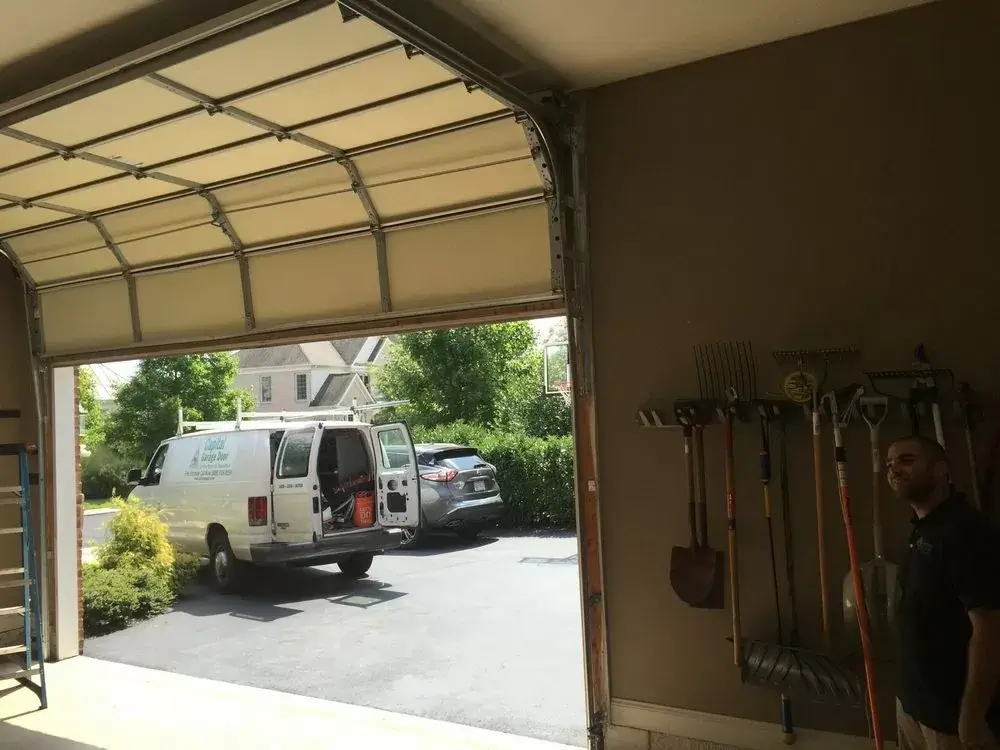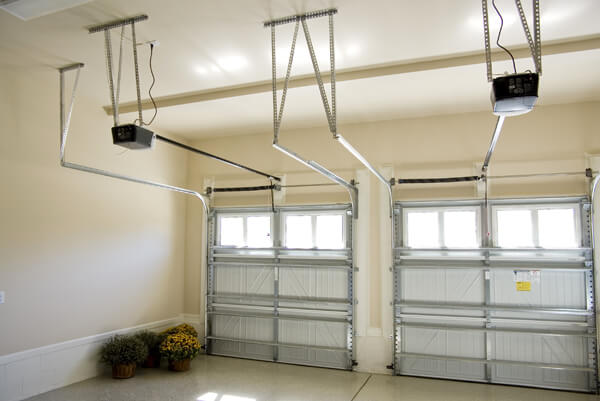Last Updated on July 31, 2023 By Emma W. Thomas
Common LiftMaster garage door problems include malfunctioning sensors, remote control issues, and door misalignment. To troubleshoot, ensure sensors are clean and aligned, check remote batteries, and adjust door tracks. If problems persist, consult the user manual or seek professional assistance from a certified LiftMaster technician for safe and effective solutions.
LiftMaster Garage Door Problems And Solutions
| LiftMaster Garage Door Problems | Potential Solutions |
|---|---|
| 1. Opener does not operate with either the remote or the wall switch. | There could be an issue with the power source. Check the motor unit to ensure it’s plugged in, also check the fuse, GFI or breaker. |
| 2. The garage door does not fully open. | The up-limit switch may need adjustment. If necessary, move the switch further from the motor unit. Also, check if the door spring is broken; if so, replace it. |
| 3. Garage door reverses before hitting the floor. | The problem might be due to the close-limit switch needing adjustment. Also, check the rollers for damage and replace them if necessary. |
| 4. The garage door does not fully close, and the light is blinking. | There could be something obstructing the sensors. Readjust them so that they face each other directly. |
| 5. Remote controller has stopped functioning. | The batteries maybe out of power; replace them. If that does not work, reprogram the remote. |
| 6. The garage door does not function in cold weather. | There could be issues with the sensitivity of the opener. Adjust it according to the owner’s manual or call for professional assistance. |
| 7. The garage door opens fine but has issues while closing. | Look for any obstructions blocking the door path. If there’s none, inspect the close-force setting on the opener and adjust it if required. |
| 8. The motor continuously runs without moving the door. | The up-limit switch might have been set too close to the motor unit. Try moving it away. |
| 9. The door moves upward but immediately drops down when released. | This typically means there is an issue with the springs. They might be damaged or worn out and need replacement. |
Reasons why a Liftmaster garage door won’t close

Some of the reasons why a Liftmaster garage door won’t close are:
1. Blocked, Dirty, Or Misaligned Photo-Eye
Garage doors have a photo-eye that operates using two pieces that align face-to-face across each side of the garage door, roughly four feet above the ground. Upon activation, a pea-sized laser beam is sent from one end to the other.
If this photo-eye is blocked, misaligned, or dirty, the garage door cannot close completely.
The beam controls the opening or closing of the door. When a user chooses to close the door, the beam scans if there is any obstruction. If any object or obstruction is detected, the door either halts its closure or reverses in full. The photo-eye is essential for safety since it ensures the door does not close when there are objects or people on the way. The moment it senses any obstruction, the movement of the door stops. Types of obstruction are stones, paper, or any physical object.
The dust or dirt on the photo-eye is seen as an obstruction, so the door will not close or move. The photo-eye is also affected by rain droplets and moist air. The specific part of the photo-eye affected by these two factors is the circuit connection.
The misalignment issue between the two photo eyes is another cause of the doors not closing. The two photo eyes activate the LED lights on the ends. It happens when the two sides have an interaction.
2. Disconnection Of Power
Like any electronic, garage doors cannot operate without power. If power is lost, the garage door will not close. Power disconnection can either be caused by unplugging the power cable or a blown fuse, faulty outlet, or circuit breaker. A faulty outlet means the power cable is not the issue, but the cord is not receiving any power. Try plugging the cable into another outlet or socket and see if the door will close. If it doesn’t, then the chances are that a blown fuse or the circuit is broken. It is advisable to have issues with the circuit breaker should be fixed by a professional.
The solutions for these two problems are plugging the cord or resetting the fuses.
3. Expired Batteries
Other than power disconnection, expired batteries are another cause of non-operating garage doors. They require remote transmitters that use batteries to open or close. When batteries expire, the remote system will not work.
The solution to this problem is to replace the batteries. It is a simple solution, so there is no need to call a professional service provider to fix it. Also, there is no need to service calls.
In situations where the user is uncertain about the type of batteries to buy, they can carry the old batteries to the store and get assistance. The remote chamber is usually on the backside of the remote. The chamber can be opened and closed by sliding the case or screwdriver. When placing the batteries, they should be aligned in the right direction, depending on the manual. Placing batteries in the wrong way has adverse effects on the Liftmaster garage door.
4. Broken Garage Door Springs
After checking the power connection and ensuring everything is working well; you should consider checking the door springs next. The issue might be that the springs are broken. Compared to other issues, broken springs is the most frequent problem. It seems like a small problem, but it is pretty severe.
The garage doors have two types of springs; torsion springs and extension springs. The torsion springs in a garage door are usually at the width. They are horizontally placed. They are responsible for guiding the door. The role of the extension springs is to lift and lower the door along the tracks.
The solution to this problem is replacing the springs. Service calls should always be done.
There are a certain number of cycles that a spring can be involved in. When the cycle end, the spring should be replaced. Overuse of springs beyond these cycles can lead to snapping, which causes the door to stop operating abruptly. It is dangerous, and it causes inconvenience to the user. In a situation where a spring snaps in the morning, the user will be late for work or school. It can be frustrating.
A professional service provider should fix broken springs. Manually opening a door or attempting to fix it is not advisable
5. Snapped Cables
Cables ensure the springs can move up and down physically. In situations where the springs break, the cables prevent the door from slamming to the ground with all of its weight. This slamming can cause damage to the door and any object on its way. An object means a living thing or a non-living thing. Also, a loud noise is produced. A broken cable is a dangerous problem because there will be no way to prevent the slamming of the door. The solution to this problem is to replace cables. The service calls should always be done.
Once you realize the springs are broken, it is important not to operate the door. This is because the cables will quickly get damaged. Instead of reaching this point, it is advisable to avoid using a door if the springs are already broken.
Solutions To Fix Problems Related To Liftmaster Garage Doors

Door problems are frustrating. It is essential to know the basic fixing tips for the doors. Some door problems include the door being unable to close, but it can be opened, a door closing partially, the door being unable to open even slightly, and the remote system of the door not working.
One of the solutions to fixing doors is to adjust the protector system sensors. After this, the doors will work correctly. Liftmaster garage doors have protector system sensors. They have a light that detects anything that crosses their path. Once they detect something or someone, the door opens. If a door problem is detected, first confirm the sensors are working. This is done by ensuring there is nothing between the sensors. If the pathway is clear, the sensors are problem-free.
The sensors should be arranged correctly. When the arrangement is correct, the indicator lights in both the sending and receiving eyes will glow steadily. The wire connection should also be done correctly. If the alignment is done incorrectly, the sending eye will glow, but the receiving eye will be dim, flickering, or not light at all. When the sensors are correctly aligned, the garage door will open and close with ease.
Conclusion
Most home garages use the Liftmaster door opener since it is safe and secure. When the garage door develops problems, it can be pretty frustrating. However, most problems experienced with these doors are easily solvable. If your door is not closing, check if there’s any obstruction in the way. These doors were designed to not close on kids, and therefore any obstruction causes the door to stop. Remove any obstruction before you try to close the door. If you use the remote control to close the door, check to ensure that it has batteries; sometimes, the issue is with the battery or remote.
Another common problem for most people is a power failure; if your door opener is not connected to the power, the lights won’t blink or turn green. This could be because of the disconnection of a blown fuse. If your door opener is well connected, contact a technician to come and check and change the fuse for you. Your door springs could also be broken, and you need a professional to fix that for you.
References:
https://fixitrightgaragedoors.ca/how-to-solve-liftmaster-garage-door-opener-problems/
https://heritagedoor.com/how-to-troubleshoot-my-liftmaster-garage-door-opener/
Emma is a graduate of Domestic Science or Family and Consumer Sciences (Home Economics) from the University of Wisconsin. She has 7 years of experience Working with the strategic section of BestBuy and now writing full-time for Homeeon.
From Managing the Home, Interiors, Cleaning, and Exteriors to Gardening and everything about Making A Home Liveable – is her passion and this Homeeon is the result of this.
Emma loves decorating her home with the best stuff found online. She cares about quality over anything and writes reviews about them here in Homeeon. Get in touch with her over Pinterest.
Keep reading her blogs.
